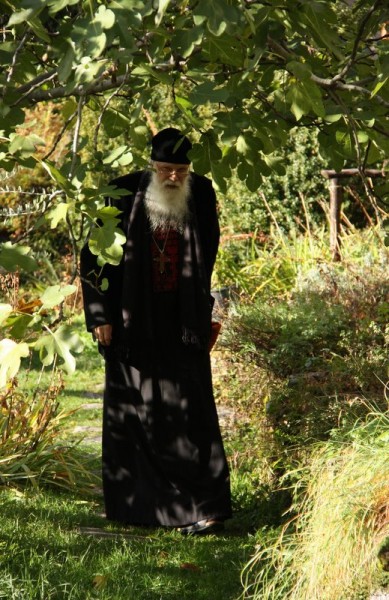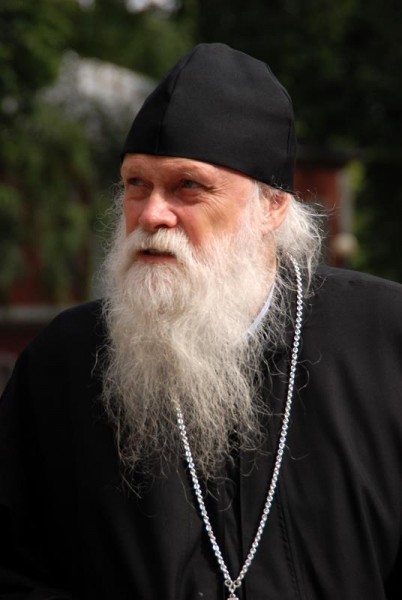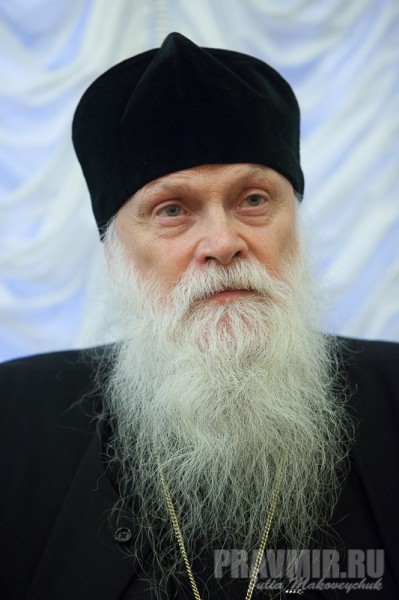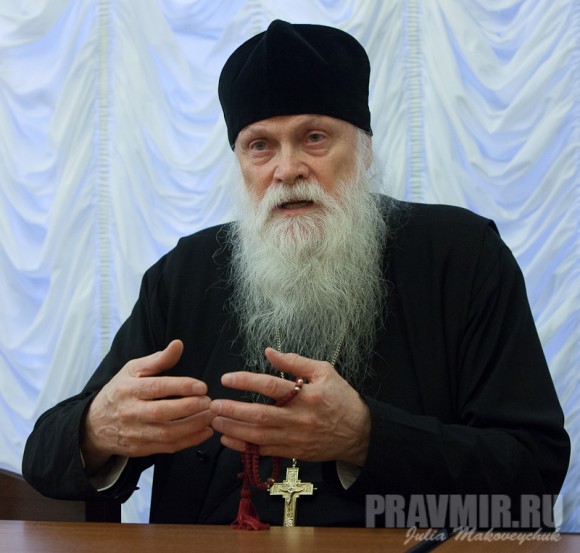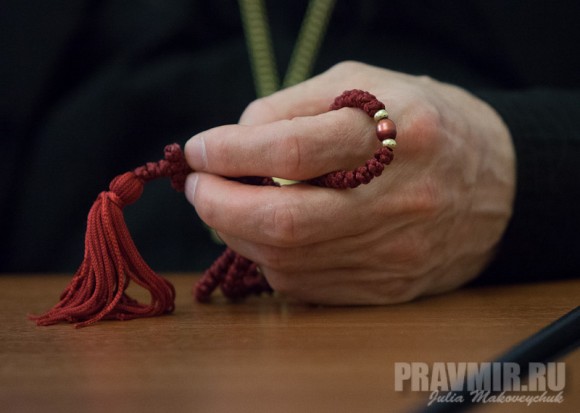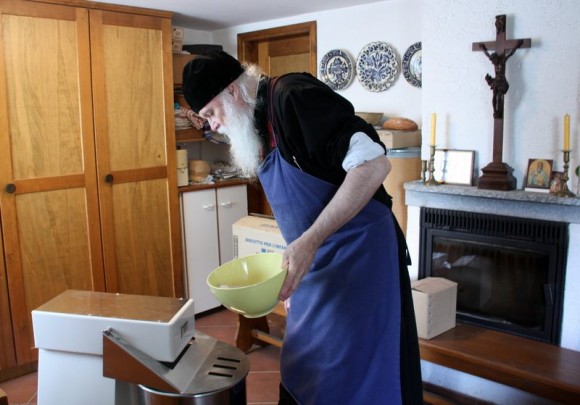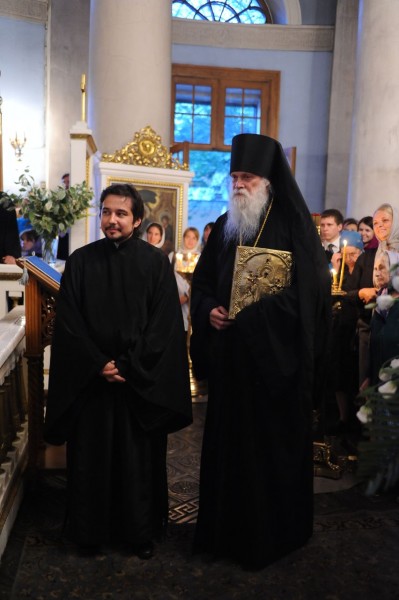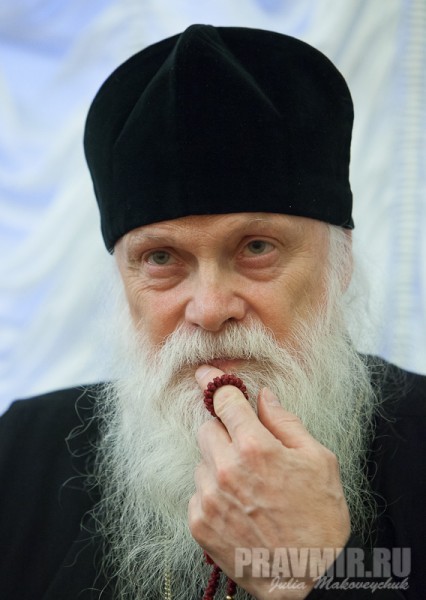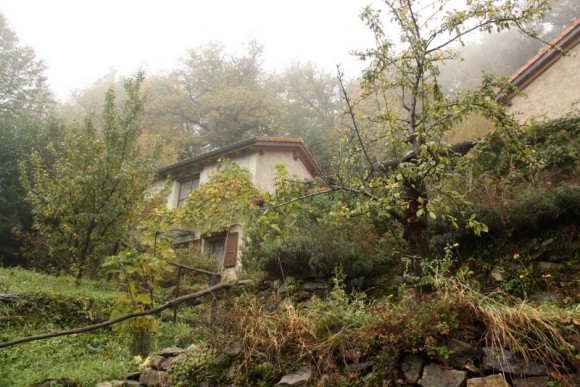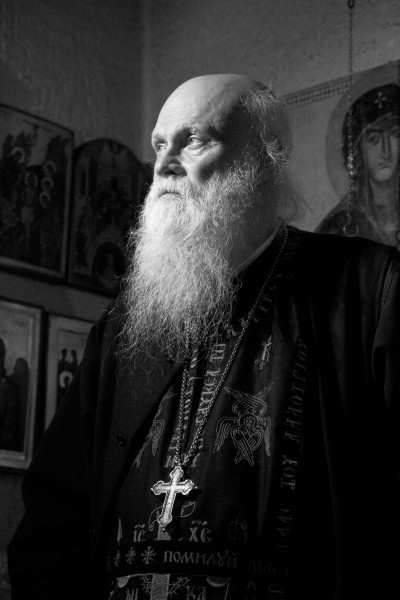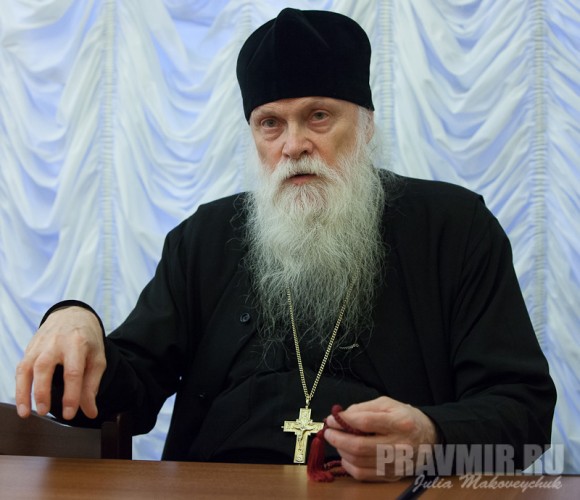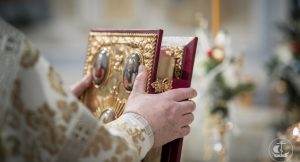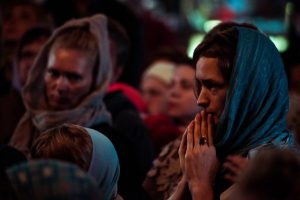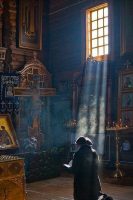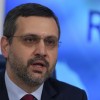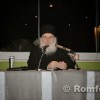What does it mean to be a Christian? What is a real monk? Can monasticism be reformed? For whom were the works of the Holy Fathers written? Schema-Archimandrite Gabriel (Bunge), renowned patristic scholar and hermitic monk, replies to these and other questions.
Fr. Gabriel Bunge was born in 1940 in Cologne, Germany, to a Lutheran father and a Catholic mother. At the age of twenty-two he entered the Benedictine Order in France; he was ordained to the priesthood in 1972. He has dedicated many years to the study of the works of Evagrius Ponticus. Since 1980 he has lived in the Skete of the Holy Cross in the Swiss canton of Ticino, where he follows the ancient Rule of St. Benedict. He was received into the Orthodox Church in 2010. His books in English translation include Earthen Vessels: The Practice of Personal Prayer According to the Patristic Tradition; The Rublev Trinity: The Icon of the Trinity by the Monk-painter Andrei Rublev; Dragon’s Wine and Angel’s Bread; and Despondency: The Spiritual Teaching of Evagrius of Pontus.
Fr. Gabriel, has your life changed since you became Orthodox?
Of course, it has changed a great deal, substantially even. As I have already related several times, when telling my personal history, I became acquainted with Orthodoxy, originally with the Greek Church, at the age of twenty-one, in 1961. It’s in 2010 that I became Orthodox. I had known the Orthodox Churches very well – including the Russian Church – but it had been from the outside, which is not the same thing. I had known it apart from the essential fact of sacramental communion, which I had always lacked, and which finally became the major reason for which I took this step. Because many people said to me: “Wasn’t spiritual communion enough for you?” As a matter of fact, it wasn’t. This was not ultimately enough for me.
Thus, one can get to know something well from the exterior. Even if the relations I had with the Orthodox were already excellent, to participate in the inner life of the Church is another matter entirely. And for me, since I am a monk, this has also affected me on the level of monasticism. Now I can relate entirely differently today with my brethren than I could when I stood on a high threshold, as it were, but was not a full member of the Church.
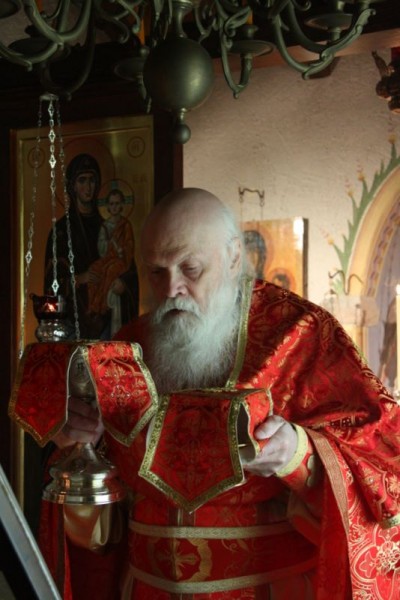
Today I have my own perplexities and questions. I am old, and everyone asks me questions – including you. But to whom can I ask questions? It’s difficult. I hope this will not seem indiscreet, but I had perplexities about my own life as a schema-monk. Now I could simply go to the Trinity-Sergius Lavra and have a long talk the Elder Ilya [Reyzmir] – he is about my age, only a bit younger. And he gave me the answer that I could have given to someone else, but that I do not have the right to give to myself. One has to ask. This would not have been possible before. You see, the changes have been substantial. This was one example; I could give many more.
Do you remember your first patristic books?
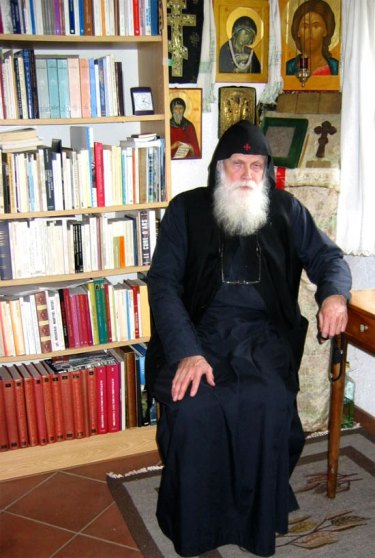 Recently, with the help of my friend – a Benedictine at Chevetogne and my successor as librarian, our common friend, Fr. Antoine – I reconstituted my first patristic library, because I had lost one piece or another. Because it had been the discovery of this literature that had originally formed in my spirit the image of a monk. When I wanted to become a monk, I first went on a literary search, because in Cologne, where I was born, there was no Benedictine monastery of a classic type. The other orders that existed were not, in my eyes (and in actual fact) monks: they were brothers.
Recently, with the help of my friend – a Benedictine at Chevetogne and my successor as librarian, our common friend, Fr. Antoine – I reconstituted my first patristic library, because I had lost one piece or another. Because it had been the discovery of this literature that had originally formed in my spirit the image of a monk. When I wanted to become a monk, I first went on a literary search, because in Cologne, where I was born, there was no Benedictine monastery of a classic type. The other orders that existed were not, in my eyes (and in actual fact) monks: they were brothers.
My first library consisted of small selection of the sayings of the Desert Fathers – a minuscule Paterikon. There was nothing like the large editions that you have today in the West. (Here you always had Paterikons.) Then two discourses of St. John Cassian on prayer, then a small Philokalia – or, more precisely, excerpts translated from the French. There was also The Lives and Teachings of the Startsi [Leben und Lehre der Starzen] by Igor Smolic, an émigré scholar living in the West, who wrote some very substantial things about Russian monasticism that I came to know of this way. And, above all, there was The Way of a Pilgrim in the first German edition going back to the 1920s. This had only the first four tales – since this book is made up of several parts; today it is a thick volume. We even finally know who the author is: Hieromonk Arseny (Troepolsky). It was with the help of this literature that I was able to form in spirit an image of the monk.
Immediately after reading The Way of a Pilgrim, I began practicing the Jesus Prayer – walking, as he did, because I went from my home to the university through a park. I had never before seen a prayer rope, but I learned how to use one long before entering the monastery and even long before visiting the East. When I made this trip – I was then a twenty-one year old student – I discovered in the person of an old abbot, Fr. Seraphim, the living icon of a monk. That is, first there was a literary discovery, and then there was the reality. A very beautiful figure – I didn’t know that he was a geronda or starets. That’s how everything began.
Who is a true monk?
To my mind, the ideal of a monk is incarnate in the figure of the abba. The first desert fathers were charismatic figures, if you will. One should first add that “spiritual father,” “abba,” and “starets” or “geron” – these are all the same thing. Today a distinction is sometimes made between these three aspects, but in fact an Elder (geron or starets) is a spiritual father, who out of respect is called Abba.
These were quite striking figures and one can say that each of them incarnate the essence of monasticism, but each in his own way: no two were identical. Just the same as with the Elders here in Russia – of whom there have been many, right up to the present day – who always had something in common while simultaneously being completely different from one another. Each incarnate, in his own way, the essence of monasticism, and thus the essential virtues. These essential virtues are humility, gentleness, love for neighbor, and unceasing prayer. They are simultaneously in perpetual communion with God through prayer and in communion with their neighbors. To paraphrase the words of Evagrius: “Separated from everything and united with all.” That’s the goal. Each incarnates this goal in his own way. Every saint incarnates in his own way the Christian.
How did you understand that you had a calling?
It was in fact very simple. You don’t need any earthquakes or other cosmic events. I didn’t know at that time about the life of St. Anthony, but I later learned that he had received his calling in the same way. I was a young man when I went to church one Sunday and they read the Gospel about the rich young man [cf. Matthew 1916-30; Mark 10:17-31; Luke 18:18-30]. I instantly understood that this rich young man, today, was me. This was not a word addressed to all of humanity: this is a call that Christ, when He so desires, addresses to a specific person.
Christ called His disciples individually. He did not make His appeal to the crowd, but He always chose two brothers, and then another two brothers: follow Me. It was the same thing with this famous young man, who did not want to respond. I understood that this was me, today, and that I had to respond and, moreover, that response could only be “yes.” Curiously, I was certain at the same time that this “yes” signified that I should become a monk, although I had never seen a monk. I had read a few Fathers, but I had not yet been to Greece.
Later I began to look for how to realize this calling. In the West this was not so easy. In the Orthodox world there is simply monasticism, while in the West there exists an infinity of orders and institutions, each of which has its own specificities, and thus one has to choose among all these. Choosing one order means not doing what the other orders are doing. In the end I decided – or God guided me – to choose the most ancient order in the West: the Benedictine Order, the roots of which go back to the undivided Christian Church of the seventh century, to someone who is a great saint of our Church as well. You see, it was all very simple.
Everyone is called in his own way. God calls everyone in a personal manner, for He alone knows the human heart. He alone created the human heart, and He alone can know it, as it is said in the Scriptures and in the Fathers. Then one is called to the conjugal life, and another to the sacerdotal life of a priest in the world, another to the monastic life and sometimes, as in my case, later even to the hermitic life. For, as you know, for thirty-two years I have lived as a hermit in the mountains of Ticino in Switzerland.
I remember very well that when the decision was made for me to leave for the hermitage, one of the oldest monks, the founder of Chevetogne, Dom Lambert Beauduin, said to me: “I understand you: this is a second vocation.” Because he himself had received a second vocation. He had been a monk of Maredsous, one of the principle monasteries in Belgium for many years; but later, when Amay/Chevetogne was founded, he had this vocation. This was very risky: to leave a large, powerful, rich abbey and embark on this adventure, because no one really foresaw whether it would meet with success or failure. At first – this was in the 1920s – people looked at him somewhat askance, because it seemed strange what this monk wanted to realize: to build a bridge between East and West. But it was a success, as you see. They still exist and offer their services in a very disinterested manner. But for me this wasn’t enough in the end.
What is the difference between the monastic life in Russia and in Europe?
It is very difficult to give a response, because everything is continually changing, everything is in motion. Orthodox and Catholic monasticism share a common roots, but they have been evolving differently for the past seventeen hundred years. At first they were very close: there was intercommunion during the first millennium and one could move from one monastery to another. You probably know that the Benedictines, the Amalfitians, were among the founders of Mount Athos. Thus it was possible to coexist. But later, by the end of the first millennium, Western monasticism took a different direction, but now that’s a question of history. And the evolution has continued in the West – as it has in the East as well.
In Russia, to speak of Russian monasticism, there was this institutional rupture – that’s how I understand it, essentially – with the practical suppression of the institution of monasticism and the razing of monasteries to the ground. But in my opinion – and here I am not in agreement with my brethren in Russia, who see things otherwise – there was no interruption at a spiritual level. Because in the person of the Elders, the essence of monasticism had always been present and was in fact transmitted. It was not the same thing in the West: during the French Revolution there was truly a complete rupture. The old monks from the old monasteries did not enter the new monasteries, which had been founded by secular priests, not by monks. This was a restored monasticism.
I personally believe that monks today in Russia would be much better off if they would focus on elements of spiritual continuity rather than on the aspect of institutional rupture. Because the institutional aspect is human, while the spiritual side is divine – it’s the Holy Spirit. I know a bit about the history of monasticism in East and West and what has always been of particular interest to me is the manner – very different in East and West – of reprising the monastic life after a period of decadence. It’s inevitable that there be decadence; things never remain on the same level.
So, what is done? In the West, they carry out reforms, monastic reforms. But the reforms are put in place from above – it’s institutional reform. The discipline in monasteries is reinstated or applied more severely. For example, the Cistercians wanted to reform the Benedictine Order by applying the Rule of St. Benedict literally, but this did not last very long. They became as decadent, so to speak, as the Benedictines. The Trappists are a reform of the Cistercians, a reform of a reform. Fine. That didn’t last eternally, either.
I am very skeptical of all initiatives to reform the Church internally, because one remains at the institutional level. And I believe – this is my personal conviction – that man has the right to reform only that which he has formed himself. Look at reforms that are institutional, constitutional, military, monetary, whatever you like – these are reforms of human institutions. So man can modify them when needed. But the spiritual life cannot be reformed. One can only make or create – and this is the duty of the hierarchy, of bishops and patriarchs – favorable conditions so that the Holy Spirit could, through good monks, renew monasticism from within.
One can cite the example of the renaissance of Russian monasticism led by St. Paisius (Velichkovsky), but one doesn’t have to go that far back. We can turn to Greece: Mount Athos in the early to mid-twentieth century was declining towards the zero mark. This was due to external circumstances; there was also the heritage of Turkocracy. The monasteries were impoverished, the brethren no longer lived communally, and all the larger monasteries had become idiorrhythmic. Thus discipline was at its lowest level. These were not necessarily very bad monks, but it was not according to the canons. Then came the catastrophic expulsion of the Greek population from Asia Minor in the 1920s, and the large monasteries no longer had their recruiting zones, because traditionally the large monasteries had received their vocations from different parts of Asia Minor. There had been a very strong Greek population there – in Pontus, Smyrna. So, there was decline.
I am old enough to remember that there were statistical calculations done in the West to indicate the date when the last monk would die. But these gentlemen did not know that in secret, in the hermitages, renewal was already underway. Because renewal did not come from the large monasteries, but from the hermitages. We can mention one name that is very well known here in Russia: Joseph the Hesychast, who reposed in the 1950s, along with many others who are not as well known. But from this small community, who lived in caves truly like the first hesychast fathers, four large monasteries were renewed from within – there was no reform or massive intervention from the outside. Then little by little, because they had become convinced, all the monasteries returned to the communal life. The idiorrhythmic life no longer existed in the end. All of this was done without intervention. And I would like to hope that the hierarchy, because it is their duty, will create favorable conditions.
One of these conditions, as on Athos, is the free election of abbots. This isn’t the case in Romania or Russia. Of course, this is not always possible. Sometimes a monastery is in a situation in which they have no qualified persons. Then the bishop, the hierarchy, has to intervene. In this regard, the example of the renaissance in the era of St. Paisus (Velichkovsky) is very significant. The key figure here was Metropolitan Gabriel (Petrov) of St. Petersburg. He was a grant court bishop, but also an ascetic – even if this wasn’t visible. His cell-attendant was the Elder Theophan, who had been a disciple of St. Paisius (Velichkovksy), who had been in Moldavia, because it was no longer possible to live like a good monk in Russia after the reforms of Peter the Great and Catherine. Monasteries had become homes for old soldiers, more or less. So when, for example, it was necessary to renew life on Valaam, the Metropolitan asked Theophan: “Whom can we send as abbot?” Because this could not have been done alone. The latter replied: “We need to send Nazarius. He is an illiterate monk, but a great monk.” And if fact this Nazarius completely renewed this great, ancient monastery.
If you want to renew the spiritual life in a monastery, take an excellent monk – obscure perhaps, but who is known to have spiritual charisma. Only the bishop can do this. His role is subsidiary, so to speak. Monasticism is capable of being revived from within – it has done this a thousand times. It is a very old “institution” in the Church. It can renew itself from within, but one must allow it do so. A monastery must not turn into a quarry from which the most capable are extracted by bishops. But its role is very important. There is no competition, there is no opposition between monastics and the hierarchy. And very often, as I have already said, without the intervention of a bishop, perhaps the monks themselves would not be able to accomplish this. This happens. And then, following the appointment of an abbot or abbess who is a true monastic, the monastery will quickly revive on the basis of its own resources, which had always been there.
How can prayer and obediences be balanced?
I have always put this question before monks and nuns during my travels. I have had several talks with women’s communities. We gathered in the refectory, and the nuns asked me questions. I could well see what their problem was. But I believe this is a false problem, or a false antagonism, so to speak. The most important thing in the monastic life is the monastic life. That means that monks and nuns should understand what their life consists of, what the rules are, what the goal is, what the stages are, and what the difficulties are – which come in all sorts. It is a process, a progressive process.
When a monk or nun does not know this, they can very quickly become discouraged, because they are overwhelmed by work and obediences and do not see the greater goal. Here I would say that it is the duty of the spiritual father, of true Elders – and may God grant us always to have such Elders, true one, and not fake ones! – who should show a monk or nun who says “I can’t take it anymore, because I only have twenty-four hours in a day and I can only perform my obedience or say my prayer rule.” Then one needs to say “fine” and return to essentials, because the goal of the monastic life, as St. John Cassian put it, is purity of heart – all the ascetic labor, obedience, and humility are necessary for realizing this. And then there is unceasing prayer, unceasing contact with God, the ability to hold the thought of God always in one’s spirit – to “breathe the name of Christ,” as St. Anthony puts it in his life.
Beginning at a certain moment, it is not the quantity of prayer (or of prayers), but their quality that counts. The goal of the monastic life is not to say tons of prayer. Of course, in a coenobitic community the divine services are essential – besides, the monks do not serve them for themselves alone, but the whole Church participates in them. But it’s not by doing tons of prayer that one prays; one needs to bear in mind the quality of prayer. Quality of prayer means that humble confession of the publican in the temple. The Pharisee did tons of things: fasting, almsgiving, prayer, and God know what else. He himself made a list of his own exploits, of his podvigs! But he was not pleasing to God, because his heart was not humble; he was convinced that he would be saved by his own works. As far as qualities were concerned, the publican had absolutely nothing, except prayer. A heart that is broken and humbled (Psalm 50) – this is what God wants; this is what pleases God. This cannot be attained at once or on one’s first try; but it’s the goal of our entire ascetic struggle.
Ultimately, the spiritual life becomes very, very simple. When the spirit is constantly attached with God, to the remembrance of God, then we can do everything that is asked of is, everything that our strength permits us to do. The heart is at rest.
What do laypeople ask you about the most often, and what advice do you give them?
In fact, laypeople come to the hermitage with more or less the same questions as monks: they come with questions about the spiritual life, about how to live a full Christian life surrounded by the noise of the world. I give the same advice that I give to monks, but the rule I give to each person is adapted to their conditions of life. I cannot give the same rule to a young married man with four children that I would give to an older man who lives alone. It is the same thing with regard to the mother of a family.
Because, you see, there are not two different spiritualities. One cannot be anything more than a Christian. A monk is not more than a Christian. He tries to become one, with the means that the Holy Fathers have put into our hands. Therefore I can give the same advice I give to monks, but always adapted to the circumstances of one’s life, one’s age, and the one’s spiritual age as well.
There are many Christians who live in the world, such as mothers of families, who lead a very intense prayer life. But when a first child is born, and then a second and a third, certain things become very difficult. She had been in the habit of reading a certain number of akathists but now, with all these noisy little people at her feet, it is no longer so easy. So she needs to choose the right moments in the course of the day.
Fr. Gabriel, one often hears that the works of the Holy Fathers were written for people who lived centuries ago…
But man remains the same. Temptations also remain the same. The goal of the Christian life remains the same. The adversaries, the demons, remain the same. They are the greatest ecumenists: they do not distinguish between confessions, tormenting all Christians regardless of whatever church they belong to. Personally, I am in the habit of first giving to anyone certain basic texts, such as the Paterikon – the sayings of the Desert Fathers – because this is the Gospel as lived in the desert. This is comprehensible to anyone. I also recommend similar books of this genre. To some extent this is my own baggage that – thanks be to God! – was placed in my hands from the very beginning. Because if you get a taste for the essential and the authentic (and these books are the most ancient we have), then later you can read anything you want, such as a book that was written today. Because then your palate, your mouth, will be able to distinguish between the real and the counterfeit. First we need to refine the palate, the taste. And here it’s the Gospel and the foundational texts of monasticism – or of what we call the spiritual life – because in the Scriptures, in the Gospel and St. Paul, we have the principles of the Christian life. But in the Holy Fathers (I am speaking about the spiritual fathers now, not the great theologians) you see how this was put into practice.
Therefore the lives of saints, which were always much read in Russia, are excellent, because you can see how the Gospel was lived out concretely. You cannot imitate them, but you can see how all this was possible in one circumstance or another. I love reading the lives of saints very much, including the lives of recent saints. And I always tell myself: if he was capable of holding out to the end in the intolerable conditions of the camps, then I, in my truly favorable conditions, must also be able to do so – even if I cannot imitate him that way.
Final question: how many languages do you know?
I learned English in school and have spoken it since childhood; later I lived in Belgium for seventeen years, and I speak French. I have lived for thirty-two years already in the Italian part of Switzerland, and I speak Italian. So these four languages, along with my native German. I speak a little in other languages – but, alas, too little in Russian, which I learned when I was young in the monastery. I studied the grammar ten times, but because of the other languages it all got a bit mixed up in my head. I would need to live in the country to revive everything that is in my head, but you know it is difficult to put something new into an old head. People speak it very quickly, and without paying attention to the fact that my vocabulary is limited to ecclesiastical and liturgical language. But when people talk about daily life – not even to mention literature – I am already lost.
The editors cordially thank Priest Dmitry Ageev for organizing the interview with Fr. Gabriel. Photos by Julia Makoveychuk, Priest Dmitry Ageev, and A. A. Rybakov. The translator wishes to thank Subdeacon Claude Lopez-Ginisty for his editorial help.
Translated from the original French.
You might also like:
Theological Study, the Spiritual Life, and Russia Today: A Conversation with Fr. Gabriel (Bunge)
One Can’t Learn to Pray Sitting in a Warm Armchair – Interview with Fr. Gabriel
Father Gabriel (Bunge): “Orthodoxy is the Fruit of My Whole Life as a Christian and a Monk”
Contemporary Monasticism, God’s Will, and Everyday Life: A Conversation with Archimandrite Tikhon












